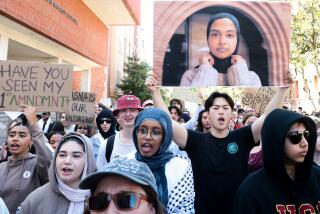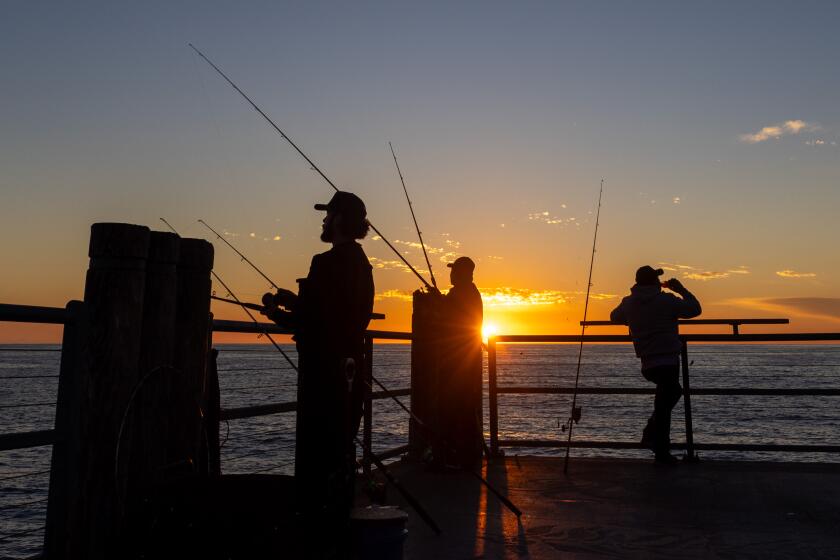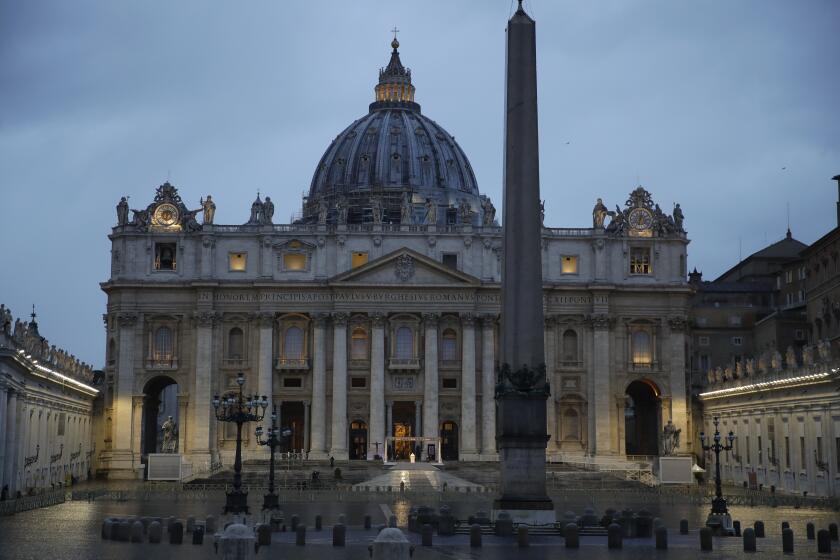If You Are Your Area Code ...
Rick Nicholson is appalled. He’s just heard that the Inland Empire, currently served by the 909 area code, may be hit with new area codes by year’s end.
“Oh no. That’s my customers!” wails Nicholson, who sells T-shirts over the Internet emblazoned with “909” and skulls. “The Gothic kids, metal militia, the extreme motorcycle people -- the 909 is their claim to fame. It’s their geography.”
Who knew?
The key to cracking Southern California’s social code lies in three little numbers: your area code.
From Beverly Hills socialites to San Bernardino dirt bikers, Southland residents identify with their digits.
“Area codes are a profound and powerful icon of identity in California, especially in Southern California, because of the sheer size and abstract nature of urban and suburban development,” said state librarian and USC history professor Kevin Starr, who divides his time among the 915, 415 and 213 area codes. “The general reputation in that part of town -- whether it’s hip or embattled or affluent -- the area codes suggest that.”
“People are almost irrationally personal about their phone numbers, and they don’t want them changed,” said Dr. Steven Teitelbaum, a Santa Monica plastic surgeon who has fought to keep the 310 area code from being splintered.
Teitelbaum and some state regulators say the push to increase the number of area codes in the Southland is fueled by the competition between phone companies, which have hoarded existing prefixes. But the phone companies say that with cell phones, faxes and the booming population in Southern California, the numbers are being gobbled up.
Whatever the reason, one of the most favored -- 310 -- and one of the most picked on -- 909 -- area codes in the region are experiencing growing pains, and irate residents and businesses may have to fumble with strange, newfangled numbers -- 424, 951 and 752 -- within a year.
That is causing angst aplenty, and not just for small businesses who will need new stationery.
The area’s most coveted code appears to be 310, which covers the coast from Malibu to San Pedro. A state judge is expected to issue an order any day that could split 310 code at Imperial Highway. Santa Monica, Malibu and West Los Angeles would keep 310, while South Bay communities would take 424.
“If you’re excluded from 310, you’re being pushed out of one of the most exclusive modes of identity in Southern California,” Starr said.
“When you hear these strange numbers you say ‘Brentwood,’ you say ‘Palm trees and the sun dipping over the ocean.’ ”
Unlike 310, 909 is low on many lists and has been a target for at least one morning radio show.
“Basically someone from 909 is someone who’s on meth, has a car on blocks in their frontyard, is wearing a mullet, a tattoo, and ripped, faded, T-shirt,” quipped Gene “Bean” Baxter of the popular “Kevin and Bean” morning radio show on KROQ-FM, which has featured insults about “the 909,” or “The Valley of the Dirt People,” for five years.
To fight back, Jim Stewart, 26, of Colton wrote “909 the Book” to counteract stereotypes about Riverside and San Bernardino counties.
“909 is a moniker people use to poke fun at the Inland Empire,” said Stewart. “I wanted to debunk the idea that it’s a downscale, crime-ridden, ugly place.
“There are Monday night poetry readings in downtown Riverside.”
State librarian Starr says that with enormous growth occurring in the Inland Empire, the stereotypes are decidedly off-base.
“You hear 909, or Inland Empire, and it means an area in such tumultuous flux that it’s left one identity and not completely gained another,” Starr said.
Bean, who doesn’t live in Southern California, broadcasts from his Puget Sound island home near Seattle, area code 206.
He admits he has never been to Riverside.
“Most of us drive through the 909 to go to someplace else, like Vegas, so all we really know is what we see from the freeway.”
But he says the 909 jokes, which grew out of a popular segment ranking all Southland area codes after the movie “Swingers” appeared in 1996, are legitimate because he and his radio partner like to get a rise out of listeners.
“People care about area codes because it’s another way for them to judge you, to put you in a box,” he said.
In “Swingers,” which was shot in L.A., Mikey the lovelorn star works up the nerve to get the phone number of an attractive young woman in a bar.
“818?’ his buddies demand when he succeeds, referring to San Fernando Valley girls. “310,” he says. They are duly awed.
Back when rotary phones came in basic black and phone numbers began with letters, it was the telephone prefix that mattered.
The prefix “Butterfield 8” was the title of John O’Hara’s novel about a sophisticated call girl and was turned into a 1960 movie starring Elizabeth Taylor.
Prefixes do still matter in some cases. One phone company sued the state Public Utilities Commission because it wanted to hang on to several thousand unused Beverly Hills prefixes. But because Southern California has become so densely populated in such a short time, it is the area code that matters most. And it is subject to frequent change.
An administrative judge ruled Friday that hearings should be held on implementation of at least one new area code for the Inland Empire.
Not everyone is unhappy.
“We’re in the business of growth, so we want to see area code changes,” said Jay Moss, president of the Southern California office of KB Home, a national homebuilder.
Loretta Lynch, the California Public Utilities Commissioner handling telecommunications, says members of Congress and the state Legislature tell her that few things push constituents’ buttons as much as an area code change.
Especially dreaded is the overlay, in which a new code is placed on top of an existing one giving next-door neighbors different area codes and forcing people to dial 11 digits instead of seven.
Phone companies have petitioned the PUC and the Federal Communications Commission for as many as 22 more area codes in California, citing population growth combined with a proliferation of fax machines, cell phones and other uses.
Lynch, a 415, believes that after going from 10 to 25 area codes in the last decade, the Golden State has had enough.
She and fellow commissioners have installed number conservation measures, and say there is ample supply for years to come. Records show there are 3.3 million unused phone numbers with the 909 area code, according to PUC staff, with 2.43 million in phone carriers’ inventories. “The phone companies are just being greedy,” said Lynch.
However the numbers shake out, everyone agrees the social code will survive intact, with people quickly adopting attitudes to fit the numbers.
“213 used to be palm trees, and now it’s downtown,” said Teitelbaum, the plastic surgeon.
“If Santa Monica became 424, in six months 424 would mean palm trees.”
More to Read
Start your day right
Sign up for Essential California for news, features and recommendations from the L.A. Times and beyond in your inbox six days a week.
You may occasionally receive promotional content from the Los Angeles Times.






